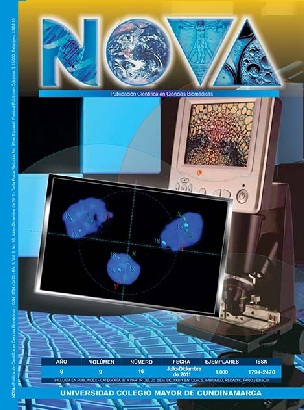Fluorescent in situ hybridization can be used to diagnose prenatally the most frequent aneuploidies. Nucleic from non-cultivated fetal cells are used. This is an important advance in prenatal diagnosis. We describe the application of FISH in 15 non-cultivated amniotic fluid samples collected between 12 ± 5/7 and 14 6/7 weeks (m ± 1 s.d. = 13.63 ± 0,52). Amniotic fluid volume ranged from 2 to 4 ml (3,16 ± 0.58). All indications were advanced maternal age. The time to obtain the results ranged from 1 to 5 days (2.13 ± 1.55 days). The times to deliver the cytogenetic results ranged from 13 to 22 days (18.4 ± 3.2). In total, 14 cases (93.33%) were informative. The five aneuploidies diagnosed by FISH were confirmed after the traditional cytogenetic analysis. However, the cytogenetic analysis identified one balanced chromosomal rearrangement [46,XY,t(16;17)(q24;q12)pat] and a case of mosaicism 46.XX/47.XX,+mar. Conducting FISH requires many steps that may prevent results from being obtained; the most important of these steps is to obtain an enough number of nucleic for hybridization. We conclude that the study of aneuploidies in non-cultivated amniocytes should be introduced to the prenatal diagnosis protocol in pregnant women with an increased risk of conceiving an aneuploid fetus.
keywords:
prenatal diagnosis, early amniocentesis, interphase FISH.









